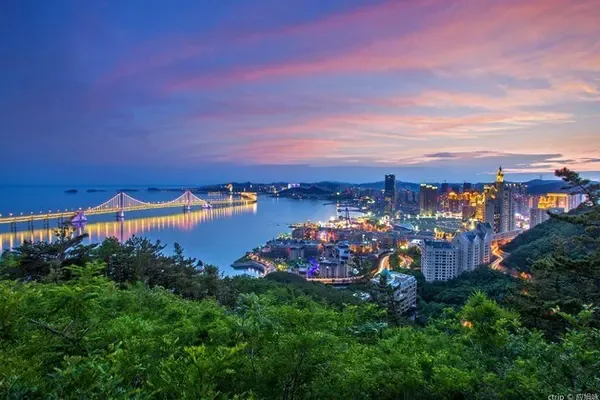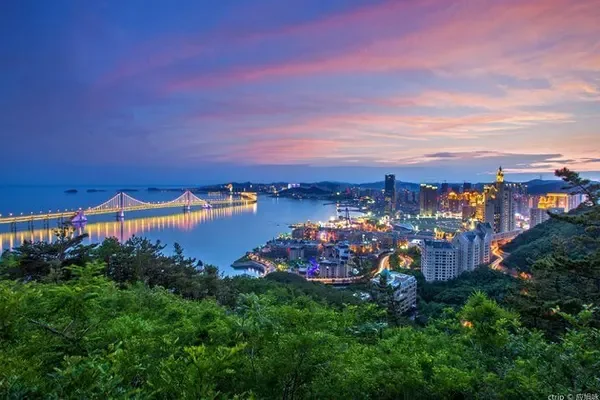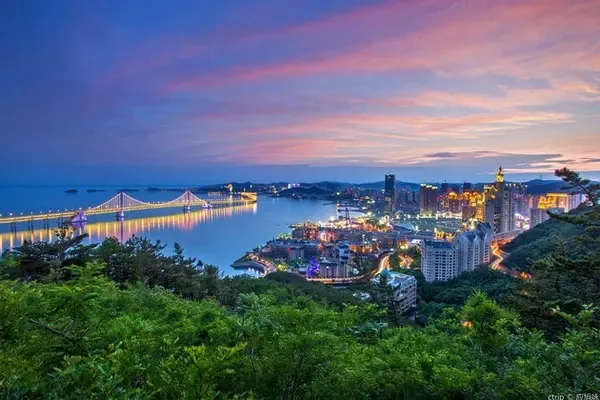Fayuan Temple, also known as Minzhong Temple, is located at the southern end of Jiaozi Hutong near Caishikou, Xicheng District, Beijing. It is the oldest existing Buddhist temple in Beijing. There are a large number of Buddhist scriptures, statues and stone carvings in the temple, and it is currently the seat of the China Buddhist Academy and the Chinese Buddhist Library and Cultural Museum.
In the 19th year of Zhenguan in the Tang Dynasty (645), Emperor Taizong ordered the construction of a temple in Youzhou City to commemorate the soldiers who died in the Goguryeo War. In the first year of Long live Tongtian (Emperor Wu Zetian's title) (696), the Buddhist temple was built, and Empress Wu Zetian gave it the name Minzhong Temple. During the Anshi Rebellion, An Lushan and Shi Siming successively built pagodas and monuments in the southeast and southwest corners of the temple, and the temple was once renamed Shuntian Temple. In the second year of Zhonghe (Tang Xizong) (882), the whole temple was destroyed by fire. A few years later, Jingfu (Tang Zhaozong) rebuilt the temple in the early years.
In the third year of Qingning in the Liao Dynasty (1057), a major earthquake occurred in Youzhou, and Minzhong Temple was almost completely destroyed. It was repaired in the sixth year (1070) of Xianyong (Yelü Hongji) of Liao Dynasty. In the Jin Dynasty, the temple was a famous temple in Yanjing, and it was once the examination room for the Jurchen Jinshi. After Song Qinzong was captured, he was also imprisoned in the temple for a period of time.
At the end of the Yuan Dynasty and the beginning of the Ming Dynasty, the temple was destroyed by war. It was rebuilt in the second year of Ming Zhengtong (Ming Yingzong) (1437) and was renamed Chongfu Temple.
In the twelfth year of Yongzheng in the Qing Dynasty (1734), a major repair was carried out, and it was officially designated as the Royal Law School dedicated to precepts, and it was named Fayuan Temple. From the forty-third year (1778) to the forty-fifth year (1780) of Qianlong's reign, there was another major renovation. After the overhaul, Emperor Qianlong visited Fayuan Temple in person and presented the "Fahai True Source" plaque.
During the period of the Republic of China, Fayuan Temple was one of the largest lingering temples in Beijing.
The existing buildings of Fayuan Temple were all built in Ming and Qing Dynasties. Facing south, the temple is an irregular rectangle with a length of about 240 meters from north to south and an average width of 75 meters from east to west, covering an area of about 18,000 square meters. The whole temple can be divided into six-entry courtyards, and the main buildings are concentrated on the north-south axis. There are Shanmen, Tianwang Hall, Daxiong Hall, Mizhong Terrace, Pilu Hall, Great Compassion Altar, and Tibetan Scripture Pavilion in sequence.
The mountain gate and the first entrance to the courtyard The mountain gate is composed of the main entrance and two side gates. There is a brick screen wall on the south side of the gate. Inside the mountain gate is the Hall of Heavenly Kings, which houses the bronze statues of Maitreya Buddha and the Four Heavenly Kings of the Ming Dynasty, which were moved from Nianhua Temple (located at No. 61 Dashiqiao Hutong, Xicheng District, Beijing, a Chinese Buddhist temple). There are several inscriptions in front of the hall, and there are bell towers and drum towers on the east and west sides. The five halls behind the Hall of Heavenly Kings all have east and west side halls or rooms, which are connected and enclosed by corridors and verandas, forming five groups of courtyards.
The main hall in the second courtyard is the Daxiong Hall, which is five rooms wide and three rooms in front of the Baosha. It is the most important building in the temple. Under the eaves, there are colored paintings of golden dragons and seals, and a plaque of "Fahai Zhenyuan" written by Emperor Qianlong hangs on the beams of Baoxia. In front of the hall, there are six stone steles in Ming and Qing Dynasties, which describe the history of building the temple. In the center of the hall are enshrined the statues of Vairocana Buddha, Manjusri Bodhisattva, and Samantabhadra made in the early Ming Dynasty, collectively known as the "Three Saints of Huayan". Parallel to the "Three Sages of Huayan", on the left side are the images of Bodhisattva on Medicine, Bodhisattva of Inexhaustible Intent, and Bodhisattva of Medicine King, and on the right side are the images of Bodhisattva Avalokitesvara, Bodhisattva Mahasthama, and Bodhisattva Maitreya. Together with Manjusri and Samantabhadra, they are collectively called the "Eight Great Bodhisattvas". In addition, there are eighteen Arhat statues carved in wood in the Qing Dynasty on the hatchback of the main hall.
The main hall in the third courtyard is Mizhong Terrace. At the end of the Tang Dynasty, Guanyin Pavilion, a huge three-story pavilion, was built here. At that time, there was a saying "the high pavilion of mercy and loyalty, go to the sky to hold it", and later generations named the building here the Tower of mercy and loyalty. Now here and on the gable outside the platform are preserved the inscriptions of the past dynasties since the Tang and Liao Dynasties. Tang Liyong's "Yunhui General Monument", the residual column foundation, "Fayuanbayong", "Heart Sutra" and so on are the most precious.
The main hall in the fourth courtyard is Pilu Hall, also known as Jingye Hall or Dabianjue Hall. In front of the hall, there is a large stone sea from the Yuan Dynasty, which is exquisitely carved with patterns such as sea water, river cliffs, mountains, seas, dragons and horses. In the hall is enshrined a bronze five-party Buddha statue of the Ming Dynasty with a total height of 5.65 meters, which is extremely rare. The upper layer of the statue is the Pilu Buddha sitting on the Xumi seat, the middle layer is the four Buddhas in the east, west, south, north, and the lower layer is the thousand-petal lotus throne, and a small Buddha is carved on each petal, forming a scene of "thousand Buddhas circling Pilu". This group of Buddha statues was originally in Longchang Temple, but was moved here after the temple was destroyed. The hall originally housed the parietal bone relics of Master Tang Xuanzang, but it was stolen after 1949. Now the Xuanzang Memorial Hall has been built in the temple to collect souvenirs such as the master's skull and writings obtained from other channels.
The large stone sea and the double-layer base have a lot of history. According to legend, Kublai Khan, the ancestor of the Yuan Dynasty, placed the Great Jade Sea in Dushan as a wine tank in the Guanghan Hall. It was passed down to the Zhenwu Temple outside the Xihuamen in the Ming Dynasty. It was placed in the Chengguang Hall in Tuancheng, Beihai, but the base was left in the Zhenwu Temple. In the 14th year of Qianlong, Emperor Qianlong ordered to carve a stone sea in the shape of Dayuhai and put it on the original base of Zhenwu Temple. The wall carvings outside the stone have patterns of tumbling sea water and sea beasts, seahorses, dragons, sea yakshas and other patterns. When the Wai Fayuan Temple was rebuilt in 1980, the large stone sea and the double-layer base were moved in front of the Pilu Hall of the Fayuan Temple. Therefore, the Dashihai is from the Qing Dynasty, but the base is from the Yuan Dynasty.
The main hall in the fifth entrance courtyard is the Great Compassion Altar, also known as the Guanyin Hall, with five rooms wide and a Baosha behind the hall. All the statues of Guanyin are enshrined in this hall, in different shapes, there are 7 statues in total. In the hall, there are various rare Buddhist scriptures from the Tang Dynasty to the Qing Dynasty, as well as Buddhist scriptures in Xixia, Uighur, Mongolian, Tibetan and Dai languages.
The Sutra Pavilion in the sixth entrance courtyard is located in the last entrance courtyard. It is a two-story building with a width of five rooms. Various versions of Buddhist scriptures are kept upstairs, and it is one of the institutions with the largest collection of Buddhist scriptures and the most precious editions in China. Downstairs, there are various wood carvings, stone carvings, copper castings, iron castings, pottery and cloisonne Buddha statues and pagodas, most of which have a long history and exquisite shapes. Among them, a wooden reclining Buddha of the Ming Dynasty at the Yingmen is 7.4 meters long and is currently one of the largest Buddha statues in Beijing.
The flowers of old Beijing were once known as "lilacs from Minzhong Temple, peonies from Chongxiao Temple, crabapples from Kele Temple, and peonies from Tianning Temple". At the peak of the Qing Dynasty, there were more than 300 lilacs and white lilacs in Fayuan Temple, known as the "Sea of Fragrant Snow". During the blooming season in late spring and early summer, the temple will hold a "Lilac Conference", which makes tourists linger and forget to return.
In January 1920, after the death of Yang Kaihui's father, Yang Changji, a professor of Peking University, Zeng stopped his coffin here. Mao Zedong came here to accompany Yang Kaizhi, Yang Kaihui's brothers and sisters, and take care of the funeral.



